Flexibility, balance, and body awareness are essential aspects of fitness and well-being, yet they often take a backseat in our routines. Imagine stepping into a yoga class and feeling stiff as a board, or trying to recover from an intense workout only to find your muscles as tight as a drum. That's where understanding what passive stretching is can become your secret weapon. This article will show you how to stretch smarter, not harder, by using passive stretching to improve flexibility, reduce tension, and recover faster with minimal effort.
If you're looking for guidance, Pliability’s mobility app offers curated routines to help you improve flexibility and reduce tension through passive stretching.
What is Passive Stretching
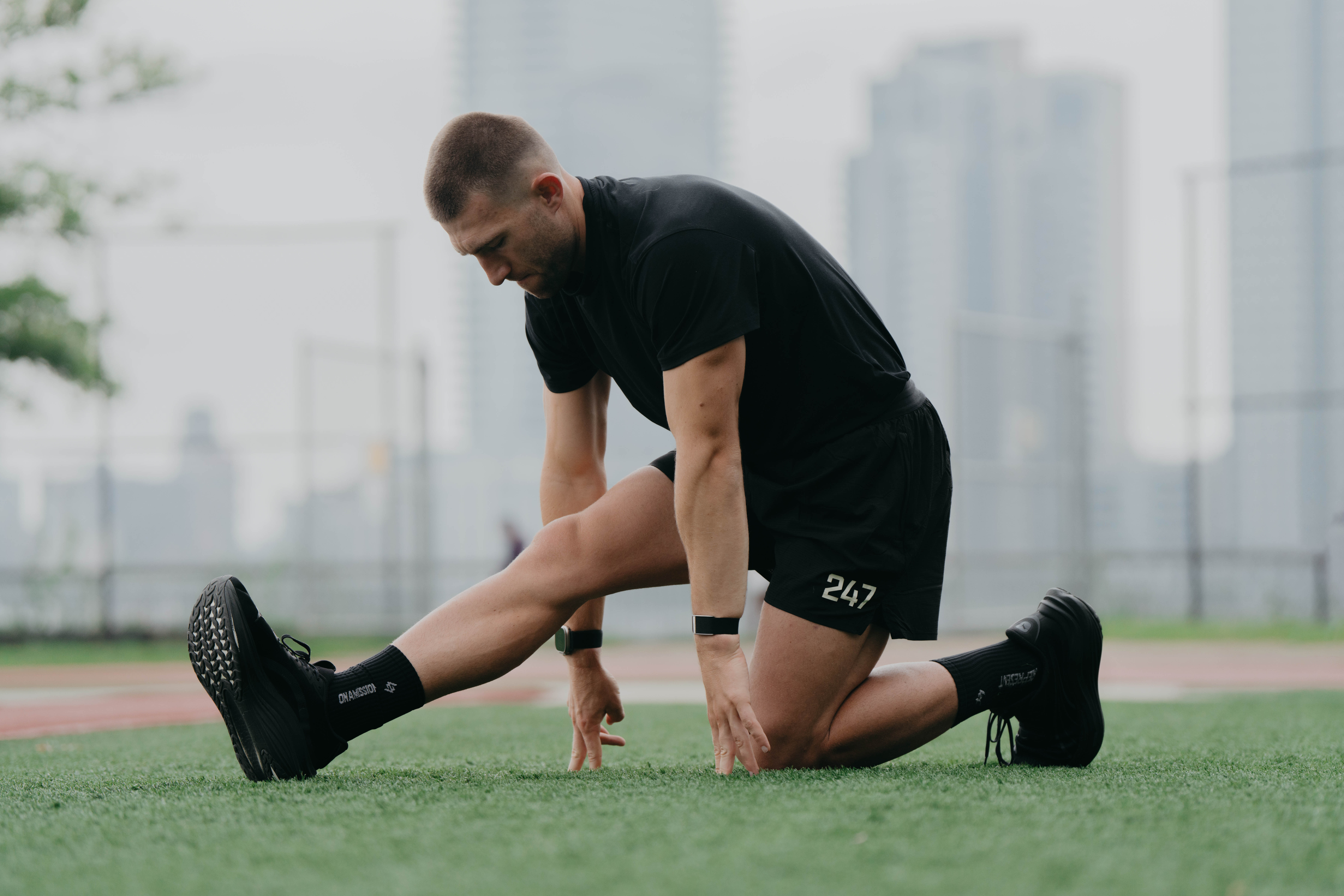
If you already have a regular stretching practice, you should learn more about different types of stretching, the benefits of each, and sample stretches.
Passive Stretching vs. Dynamic and Static
Most people are familiar with dynamic and static stretching. Static stretching involves holding a pose that stretches your muscle as far as it can be stretched. Dynamic stretching involves movements like walking lunges or hip circles to warm up your muscles before an activity.
Dynamic and static stretches are limited to how far you can physically move. Consider toe touches; some people can touch their toes and beyond, while others can’t reach their knees. Passive stretching utilizes external forces to stretch your muscles, rather than relying on your ability.
How Passive Stretching Works
Also referred to as relaxed stretching and static-passive stretching, a passive stretch is one where you assume a position and hold it with the assistance of another part of your body, or with the help of a partner or other apparatus.
For example, bring your leg up high and then hold it there with your hand. The split is an example of a passive stretch (in this case, the floor is the "apparatus" that you use to maintain your extended position).
Getting Started with Passive Stretching
“During passive stretching, your body is loose and relaxed,” says DeBorah Hill, RN, LMT. “You let an external force, like a partner, towel, or fitness strap, do the work.” For example, instead of touching your toes, you can perform a passive hamstring stretch. During this stretch, you lie on your back and use a rolled-up towel or strap to help you stretch the back of your thigh.
If you’re new to passive stretching, use care. You could accidentally overstretch a muscle, causing injury. “Listen to your body as you stretch,” advises Hill. “Passive stretching should not hurt, and many people overestimate how flexible they are. It’s helpful to talk with a licensed physical therapist or massage therapist before you start.”
Benefits of Passive Stretching
Passive stretching can improve flexibility, range of motion, and mobility. It helps improve your performance while lowering your risk of injury. Its benefits extend to people who may not be able to stretch on their own.
Passive stretching may also stimulate muscle growth and prevent muscle weakness. A 2013 study in animals showed that passive stretching for a short period each day can help build muscle. Consider adding passive stretching to your routine to:
Relieve Stress
Unlike static or dynamic stretching, passive stretching requires your muscles to be relaxed for it to work. This release of physical tension can benefit your mental health.
“When you fully relax for a passive stretch, you tell your brain to shift out of fight-or-flight mode,” explains Hill. “Passive stretching can take you out of survival mode so you feel relaxed.”
Increase Flexibility
One study found that passive stretching was more effective than dynamic stretching in increasing hamstring flexibility.
“Passive stretching can increase your range of motion when other stretches don’t work for you,” says Hill. “Your prop or partner can help you gently stretch beyond what you can normally do yourself.”
Overcome Mobility Limitations
If you have mobility issues or chronic pain, other forms of stretching can be complicated. Passive stretching works for people of all ages and fitness levels. Can’t bend over or move your body a certain way? Passive stretches can work around these limitations.
Reduced Muscle Tension
This is especially helpful for chronically tight areas, such as the hips, hamstrings, shoulders, and lower back.
Enhanced Recovery
Passive stretching supports muscle recovery after workouts or long periods of sitting, standing, or stress.
Passive Stretching for Recovery and Special Populations
Whether you’re looking to improve how your body moves or simply want to feel more at ease, passive stretching offers benefits that go far beyond flexibility. While further research is necessary to confirm the long-term effects, these findings suggest that passive stretching could be beneficial for people who are unconscious or have paralysis.
A 2018 animal study found that daily stretching improved blood flow to the muscles, potentially enhancing their function. Muscle stretching that utilizes a splint can be especially beneficial for individuals who are elderly or unable to exercise independently. There is a need for in-depth human studies to expand on these findings.
Examples of Passive Stretches: Stretches To Do Alone
Below are a few passive stretches to get you started.
Supine Single Leg Stretch
- Lie on your back and raise your left leg, keeping it straight.
- Extend your right leg straight out or bend your knee to place your foot on the floor
- Interlace your hands behind your left thigh or calf, or place a towel or strap around the bottom of your foot.
- Pull your left leg toward your body with your hands or a towel or strap, while gently pressing your leg back to resist the movement.
- Hold this position for up to 1 minute, breathing normally.
- Release the leg slowly and repeat the stretch on the opposite side.
Standing quadriceps stretch
- Place your left hand against a chair or wall to help with balance.
- Stand on your left leg.
- Bend your right knee to bring the heel of your foot toward your buttocks.
- Reach your right hand, a towel, or a strap around your right ankle.
- Gently pull your foot toward your body.
- At the same time, press your foot against the resistance.
- Hold this position for up to 1 minute, breathing normally.
- Slowly release the right leg and repeat the steps using the left leg.
Doorway stretch
- Stand in a doorway.
- Bend your elbows at a 90-degree angle, with your palms facing forward.
- Press your palms into the doorframe.
- Step forward with your left foot as you stretch your shoulders and chest.
- Hold this position for up to 1 minute.
- Step back.
- Repeat with your opposite foot forward.
- Do this stretch 2 to 3 times on each side.
Child’s Pose (Supported with Bolster)
- How to do it: Kneel with big toes together and knees apart. Place a bolster or pillow in front of you and fold forward, resting your torso on the support.
- Best time: Anytime you need a calming reset.
- Hold for: 1–3 minutes
- Safety tip: Support under the hips or ankles can help reduce strain for individuals with tight bodies.
3Seated Forward Fold
- How to do it: Sit with legs extended in front of you and hinge at the hips to fold forward. Rest your hands on your shins or feet; there's no need to force.
- Best time: Morning or after prolonged sitting.
- Hold for: 1–2 minutes
- Safety tip: Place a rolled towel under your knees to prevent strain on your lower back.
Reclining Butterfly Stretch
- How to do it: Lie on your back, bring the soles of your feet together, and let your knees drop to the sides. Add pillows under each thigh for support.
- Best time: Before bed or during recovery days.
- Hold for: 1–5 minutes
- Safety tip: Use blankets or props to avoid pulling at the inner thighs.
Want expert guidance? At Stretch*d, our Flexologists use movement-based and passive stretching methods to help you experience relief, mobility, and improved flexibility, without any guesswork.
Examples of Passive Stretches: Stretches To Do with a Partner
Working with a partner can be incredibly beneficial. They should use gentle resistance to maximize safety. Speak up if the stretch becomes too intense or if you experience any discomfort or pain.
Quadriceps Stretch
- Lie on your belly with both legs extended.
- Allow your partner to move your lower left leg gently toward your buttocks.
- Push against this resistance for 5 seconds.
- Relax for 5 to 10 seconds.
- Repeat 1 to 3 times.
- Switch to the right leg.
Hamstrings Stretch
For more comfort, bend your extended leg and place your foot flat on the floor.
- Lie on your back with both legs extended and your partner facing you.
- Raise your left leg and place it against your partner’s shoulder.
- Press your hips and low back firmly into the floor.
- Allow your partner to press your leg slowly toward your torso.
- Push against this resistance for 5 seconds.
- Relax for 5 to 10 seconds.
- Repeat 1 to 3 times.
- Switch to the right leg.
Towel Hamstring Stretch
The backs of your legs, or hamstrings, get a stretch here, no toe-touching required:
- Lie on your back, with your legs straight and relaxed.
- Slowly raise one leg toward the ceiling without bending your knee, keeping your leg relaxed.
- Hook the towel or strap behind your hamstring or calf or under the arch of your foot, depending on what’s comfortable for you.
- Using your towel or strap, gently pull your leg towards you until you feel the stretch.
- Hold for up to 30 seconds.
- Switch legs
Partner-Assisted Chest Opener
- How to do it: Stand or kneel with hands clasped behind you. Your partner gently lifts your arms upward to open the chest and shoulders.
- Best time: After upper-body workouts or desk time.
- Hold for: 30–60 seconds
- Safety tip: Communicate with your partner to avoid overstretching.
Reclined Butterfly Stretch
- Lie on your back with the soles of your feet pressing into each other and your knees open to the sides.
- Allow your partner to apply gentle pressure to your lower thighs.
- At the same time, push your legs against this resistance for 10 to 30 seconds.
- Relax for 5 to 10 seconds.
- Repeat 1 to 3 times.
Related Reading
- Body Awareness
- What is Functional Movement
- Functional Strength Training
- Does Yoga Help With Mobility
- How Long Does It Take to Improve Flexibility
- Why is Range of Motion Important
- How to Fix Tight Hamstrings
What Is the Difference Between Passive and Active Stretching?
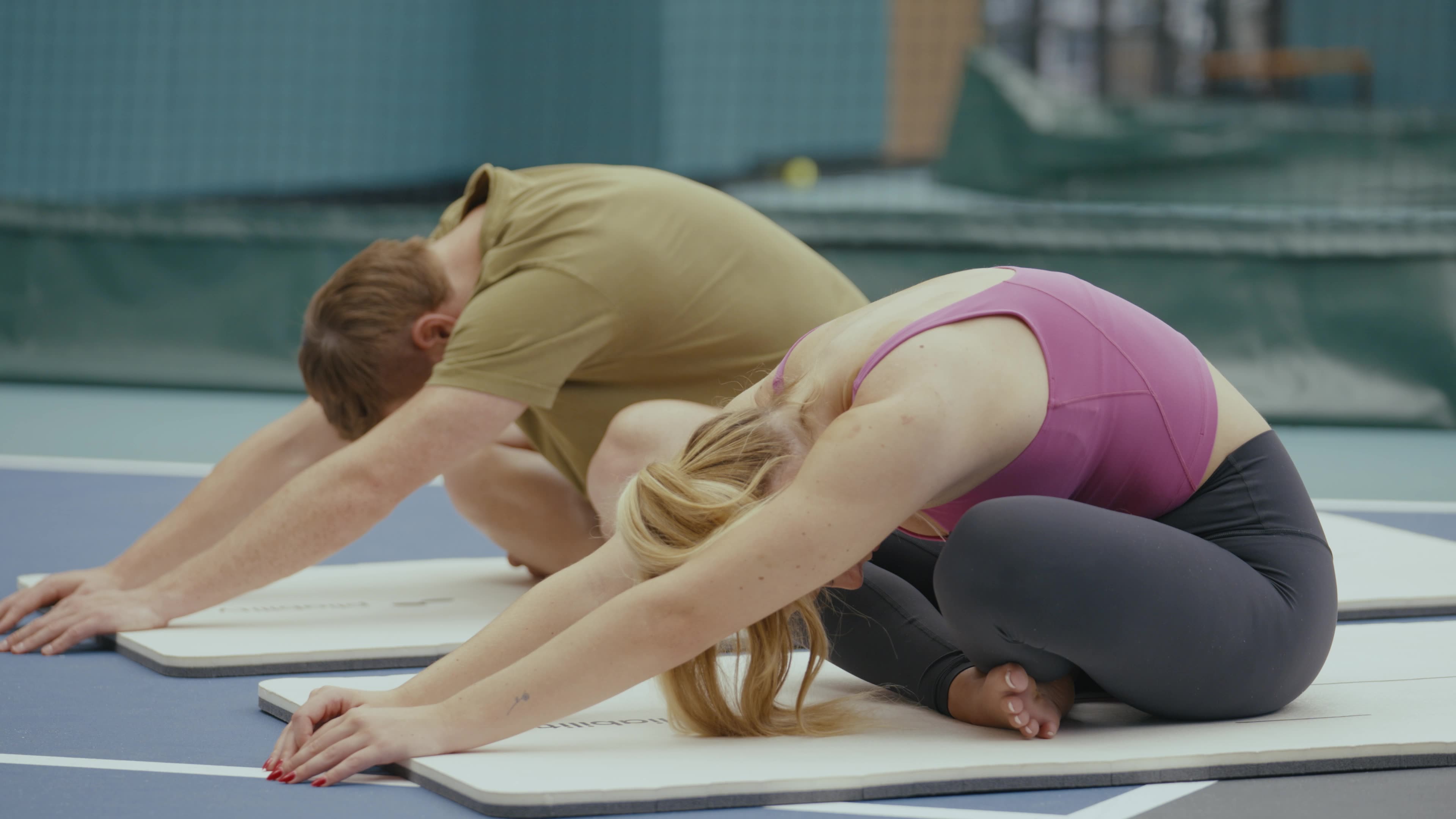
Active flexibility is the range of motion a joint can move into without an external force helping it go there. Passive flexibility is the range of motion a joint can move into when there’s an external force helping it go there.
Typically, your passive flexibility exceeds your active flexibility. This is because you can move into your passive range of motion with the help of external forces, such as a band, your hands, gravity, or an assist from another person. Moving into the end of your active range of motion requires strength in the body part you’re driving.
Active Flexibility vs. Passive Flexibility
Active flexibility is also known as mobility. Working on your mobility is a type of strength training that focuses on becoming strong at your end-of-range motion. Many people prefer active flexibility over passive flexibility because they want to be able to control their range of motion independently, without relying on an external force.
Passive stretching relies on body weight, a teacher, a band/strap, or another external force applied to a relaxed muscle. This type of flexibility primarily depends on the elasticity of the connective tissues surrounding the muscles.
Building Active Flexibility Through Passive Stretching
Working on passive flexibility will help you increase and maintain an extensive range of motion, which is essential to your progress in active flexibility. Passive flexibility is the foundation on which you can start building your active flexibility. You can turn passive flexibility into active flexibility by strengthening your muscles at the passive end of your range of motion.
With passive stretching, it’s essential to note that you are not contracting or using your muscles, but rather keeping them relaxed. Passive stretches often require very little energy and are commonly worked on when your goal is to increase your range of motion past your current comfort level.
Active Stretching
Active stretching incorporates mobility and active movement. This type of flexibility relies mainly on the strength of your muscles fibers to achieve the stretch, unaided by external forces such as your hand or a band.
Active flexibility plays a significant role in safely transitioning into different, more advanced yoga poses. Having active flexibility means you have the strength to maintain integrity and stability in your joints in a deep yoga pose.
How Active Stretching Works
With active stretching, you actively move and engage one muscle group to stretch another. This requires much more energy than passive stretching. There is less of a chance of over-stretching because you’re moving yourself into the position with strength and control.
The Issue with Passive Stretching
There’s a much higher risk of overstretching and injury in passive stretching because you’re relaxing the body part you’re stretching and letting an external force push/pull you into the stretch.
Why Active Flexibility Reduces Injury Risk
In active flexibility, you’re moving into stretching positions using the strength and integrity of the body part you’re stretching. This makes active stretching much more controlled, significantly lowering the risk of overstretching and injury.
Imagine a person who has a lot of passive flexibility in their ankles but minimal active flexibility there. Suppose they ever stumble and twist their ankle at the end of their passive range of motion.
Turning Passive Flexibility Into Injury-Resistant Strength
In that case, they are much more likely to injure themselves because they don’t have strength (i.e., active flexibility) in the position their ankle twisted into. Therefore, they cannot support themselves and protect the ankle joint in the vulnerable position it ended up in.
To become resilient and resistant to injuries in the long run, focus on transforming your passive flexibility into active flexibility.
Is Passive Stretching Bad?
Passive stretching is only inadequate when your passive flexibility exceeds your active flexibility by a significant margin. If you’re only doing passive stretching, you have a much higher risk of injury because you have a lot of range of motion in your joints that you can’t control.
Passive stretching is not all bad, though. We aim to strike a good balance between passive and active stretching. Passive stretching remains vital because it allows us to increase the range of motion available in our joints.
Why You Need Both Passive and Active Stretching
You can’t build strength and control in a range of motion you cannot access, so we need passive stretching to help us access a bigger range of motion. Active stretching helps us build strength in that range of motion. Therefore, we need to do both to increase our overall flexibility and mobility!
How To Modify Your Yoga Practice To Include More Active Stretching
The problem in traditional yoga is that there’s a lack of active stretching compared to passive stretching. This creates an imbalance between active and passive flexibility in people who practice traditional yoga regularly, which can result in many of the common yoga-related injuries, such as yoga butt syndrome, aches and pains in the lower back, shoulders, and knees.
In recent years, there has been a call to modify the traditional yoga practice to make it more mobility and strength-focused, thereby avoiding many of the yoga-related injuries. Here’s how you can enhance your yoga practice to incorporate more elements of active stretching.
Sun Salutations & Standing postures of yoga
Have you ever tried doing a sun salutation with one foot on your yoga mat and one foot sliding on a blanket on a hard floor? It will completely change the way you engage and activate your muscles in those postures! Be prepared for sun salutations to require a lot more effort because you’ll be building strength in your range of motion.
Doing this with any standing pose like Warrior I, Warrior II, Peaceful Warrior, Skandasana, Wide Legged Forward Fold, Goddess Pose, Extended Side Angle, Triangle, High lunge, and Downward Facing Dog will begin to build a lot more active flexibility in the muscles of your inner thighs, your hamstrings, quads, hip flexors, etc.
Sock Sliding Practices
Putting on fuzzy socks and practicing directly on a hard floor is one of my favourite ways to change my yoga practice up every once in a while to make it a lot more active (plastic bags over your feet on a carpet will also do the trick!).
Instead of jumping from downdog to a forward fold at the top of your mat, try sliding from one pose to another. You’ll quickly realise just how much more strength is needed to perform the movement.
Or try moving from skandasana on one side to the other, sliding into hanumanasana (the splits), pigeon pose, and other passive flexibility postures from yoga will be an entirely new experience because you now have to engage your muscles to move into them.
When Is The Best Time To Stretch?
Passive stretching calms the nervous system, helping us relax and cool down. Passive flexibility is best worked on either as a cool-down after a workout or yoga session, as your muscles will be warmer, and the chances of overextending a cold or tight muscle are lessened, or when you want to calm down at the end of the day to prepare for sleep.
Active stretching requires more effort and can be energizing. Active flexibility is best worked on either in the morning to help you wake up and warm up your joints at their current range of motion.
Related Reading
- How to Get a Crook Out Your Neck
- Loss of Mobility
- How Does Flexibility Work
- Flexibility Gymnastics
- Are Women More Flexible Than Men
- What is the Impact of Age on Flexibility
What Are the Most Important Rules When Stretching?
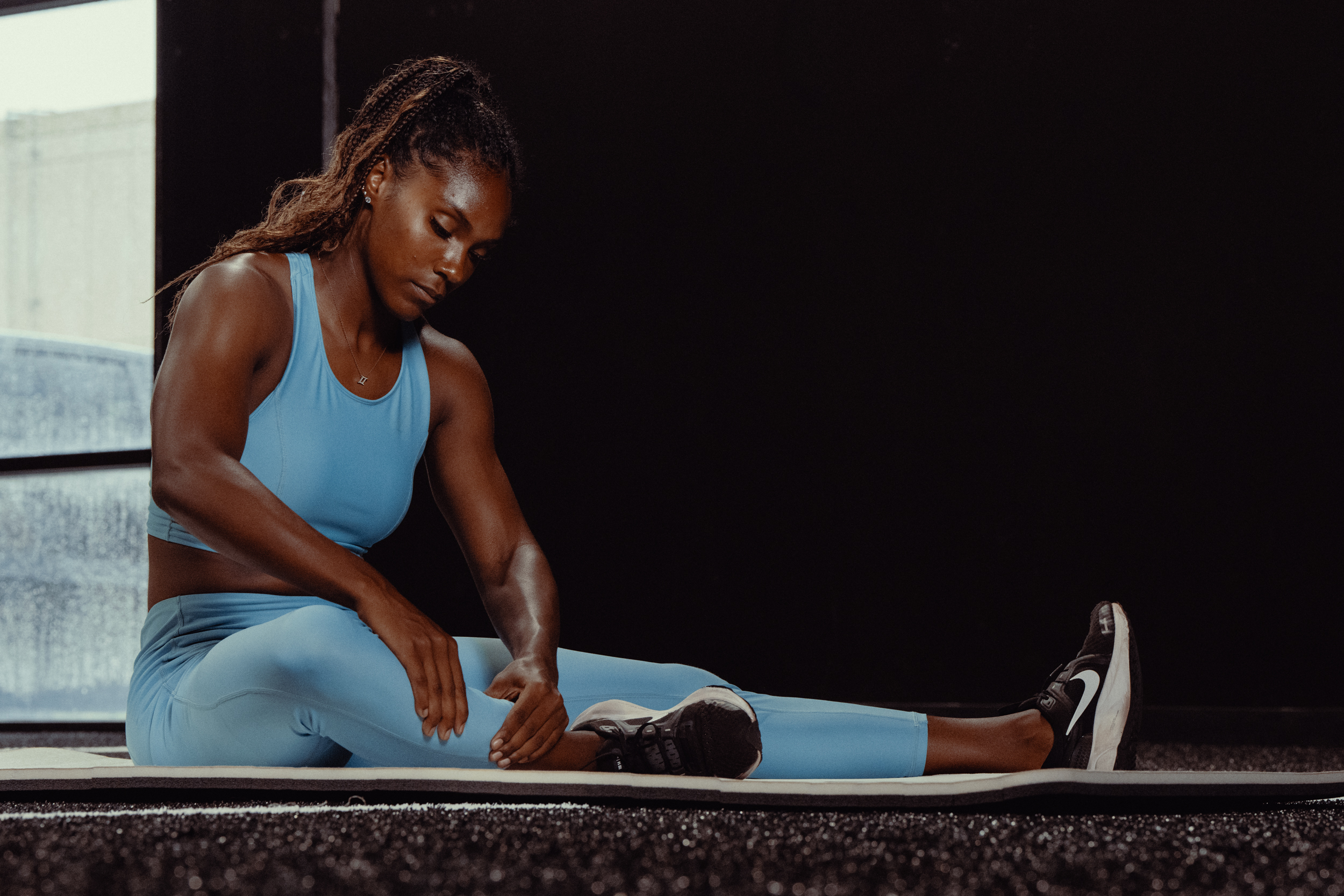
Warming up before stretching is essential for improving flexibility and performance. A good warm-up helps raise your body temperature, making muscles more pliable and ready for exercise. Simple activities, such as dynamic stretches or a light walk, are effective ways to prepare your body.
Pay Attention to How You Stretch
Proper technique is crucial for avoiding injuries. Stretching should be performed correctly for optimal results. Consider consulting with a professional stretchologist to ensure you're using the correct methods. This is especially helpful if you're unsure about how to stretch effectively.
Begin Slowly and With Care
Stretching should be done slowly and gently to help relax muscles and improve blood flow. Avoid quick, jerky movements or bouncing, which can lead to injuries. Start with smooth, gradual movements, focusing on the muscles you're stretching.
Stretch All Major Muscle Groups
It's important to stretch all the major muscle groups to maintain balance. Certain activities can cause some muscles to work harder than others, leading to uneven muscle use. Experts recommend stretching these groups two to three times a week.
Stop If It Hurts
Stretching should not cause sharp or intense pain. If you feel pain, stop and adjust your position or warm up a bit more before trying again. Aim for a gentle stretch that causes mild tension without pain.
Don’t Stretch Serious Injuries
Injured muscles or joints need rest, and stretching them could worsen the injury. Avoid stretching injured areas unless instructed to do so by a healthcare professional. This helps ensure proper healing and recovery.
Breathe Slowly While Stretching
Proper breathing is essential during stretching. Holding your breath can cause muscles to tense and stretching to become more difficult. Breathe slowly and steadily, using yoga breathing techniques or any method that feels natural to you.
Choose a Reputable Stretch Studio
Working with a professional stretchologist can be beneficial, especially if you're stretching for health reasons. They can guide you through stretches tailored to your needs. While you can stretch anywhere, a reputable stretch studio offers expert guidance and support to help you achieve your goals.
Improve Your Flexibility with Our Mobility App Today | Get 7 Days for Free on Any Platform
Pliability offers a new look at yoga, specifically designed to enhance performance. It provides a comprehensive library of videos focused on flexibility and recovery. The app delivers daily personalized mobility programs to help improve your range of motion and reduce discomfort.
With a unique body-scanning feature, you can identify specific mobility issues and address them directly. This approach can help you move more effectively and perform at your optimal level. Try it free for seven days on iPhone, iPad, Android, or their website.
Related Reading
- What is Static Exercise
- Dynamic Movement
- Why Does Stretching Hurt
- Yoga Poses for Flexibility
- Hip Opening Yoga Poses
- Proprioception Exercises
- Neck Mobility Exercises
- Flexibility Goals Examples
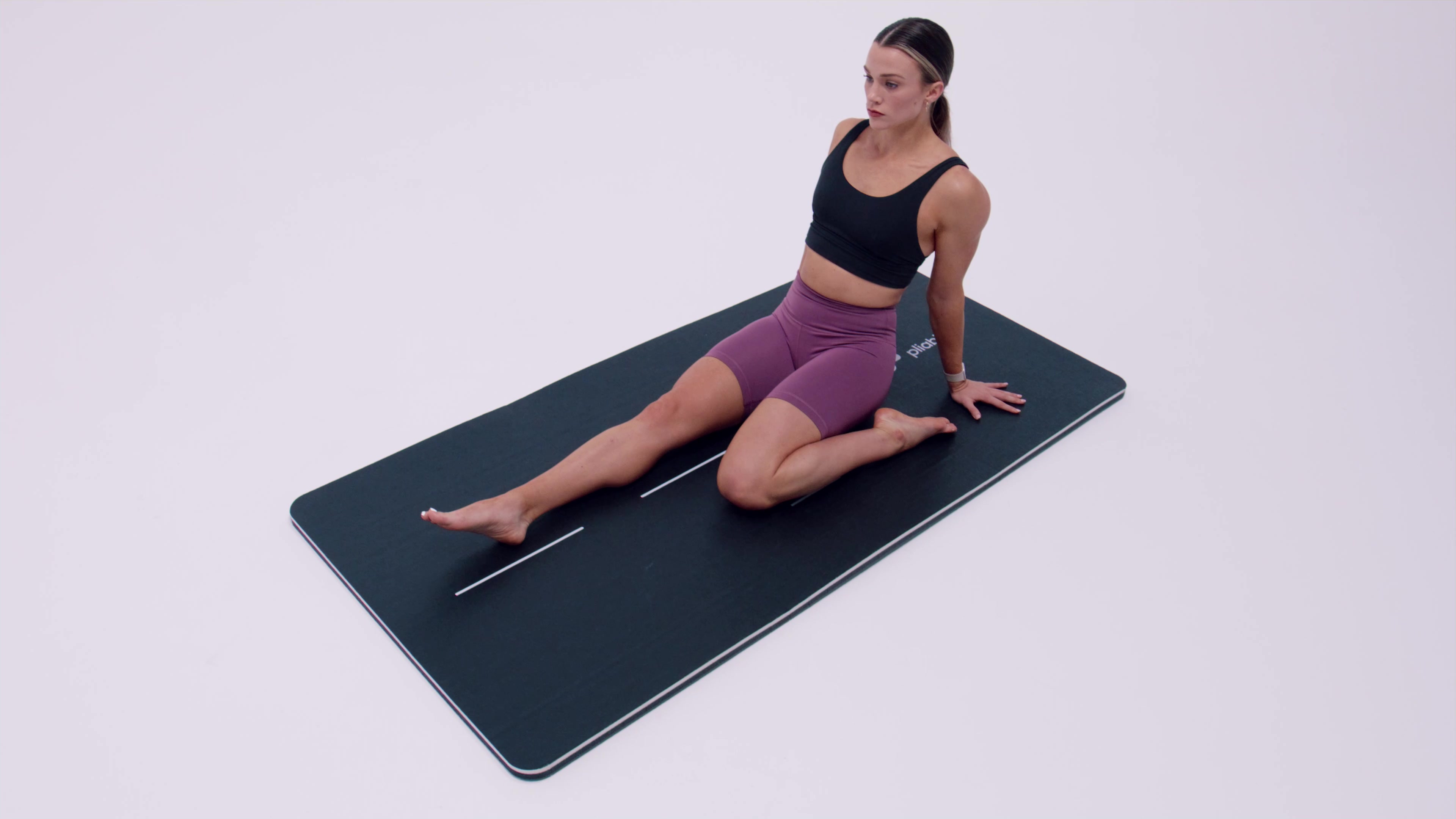
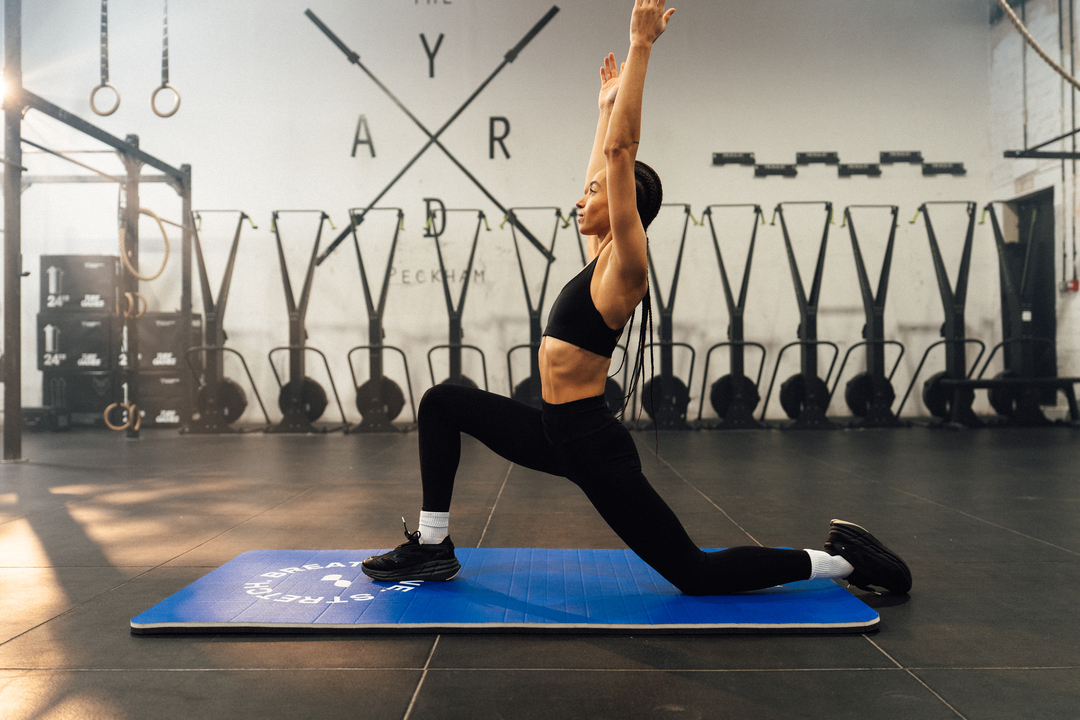

.jpg)
.jpg)
.jpg)


